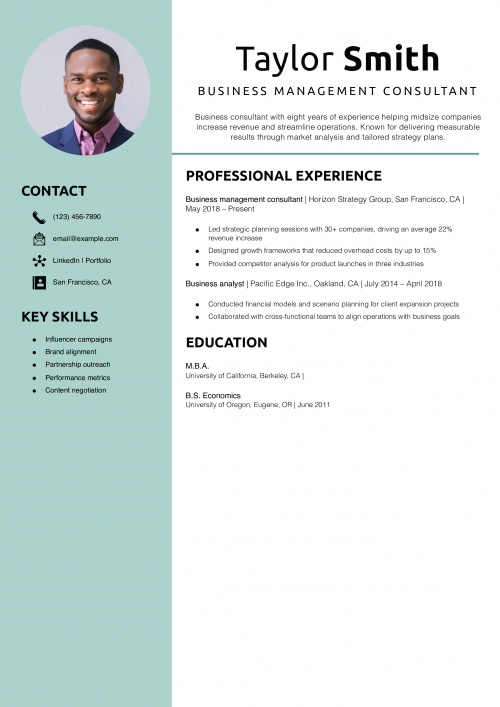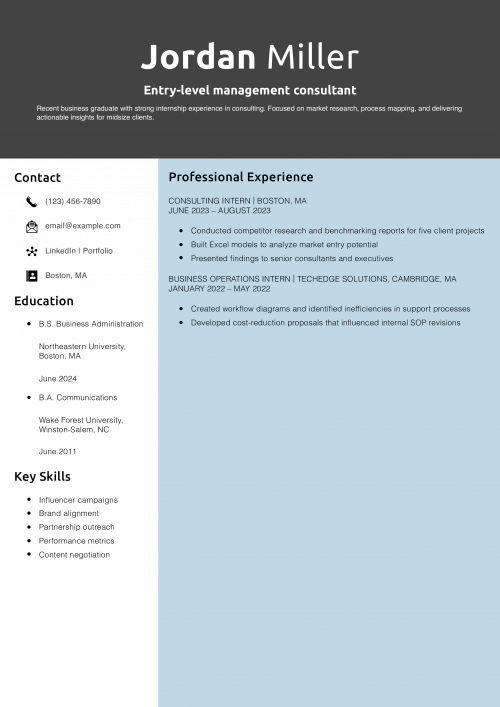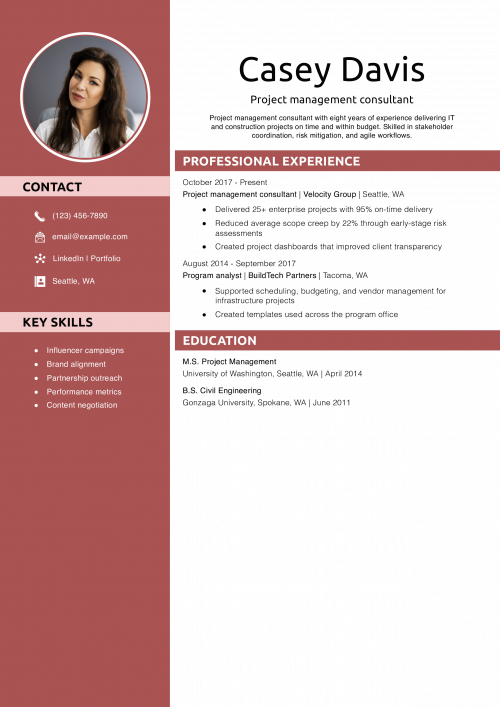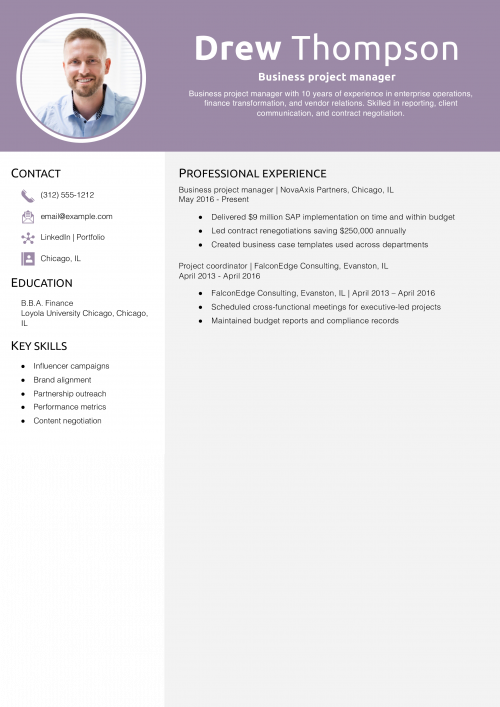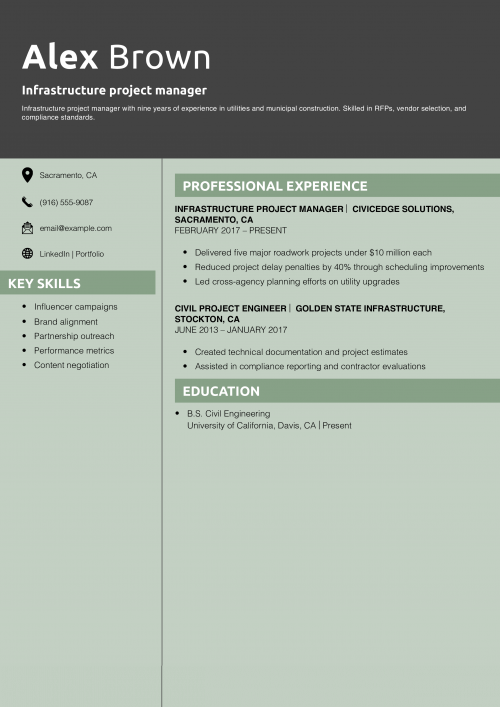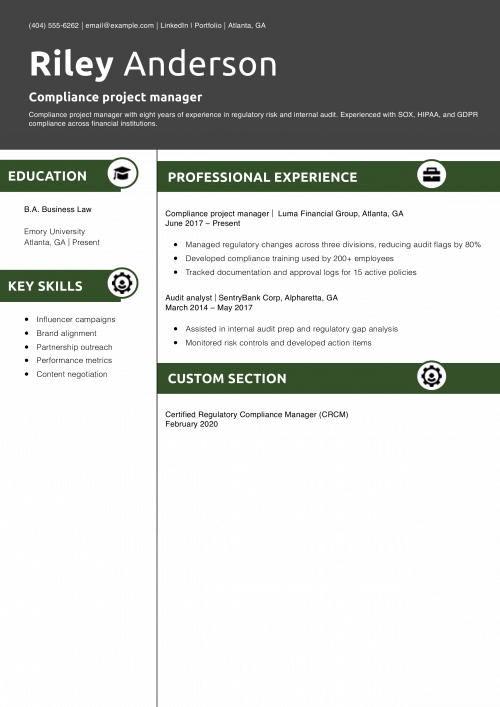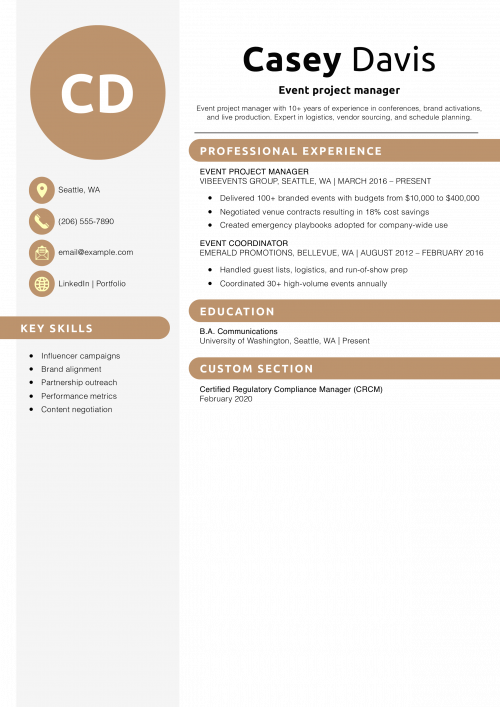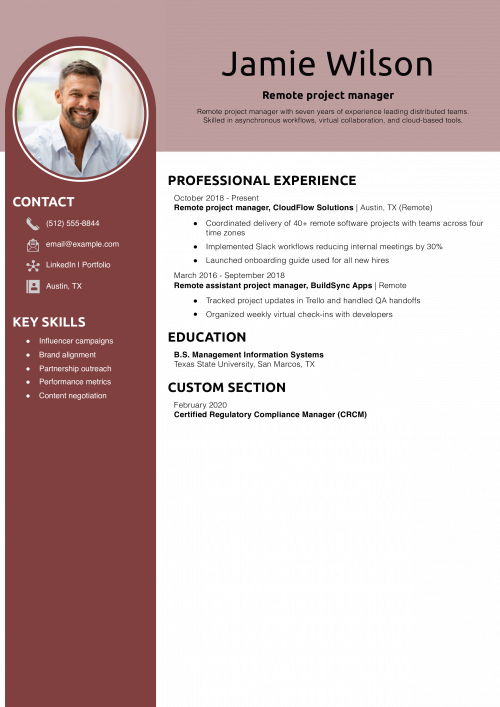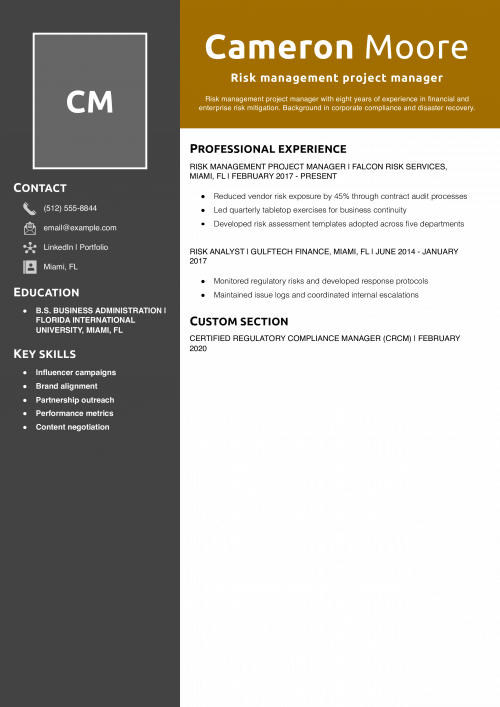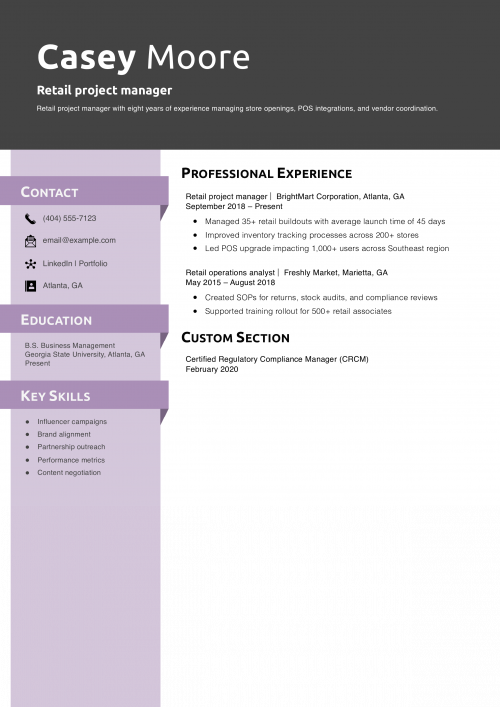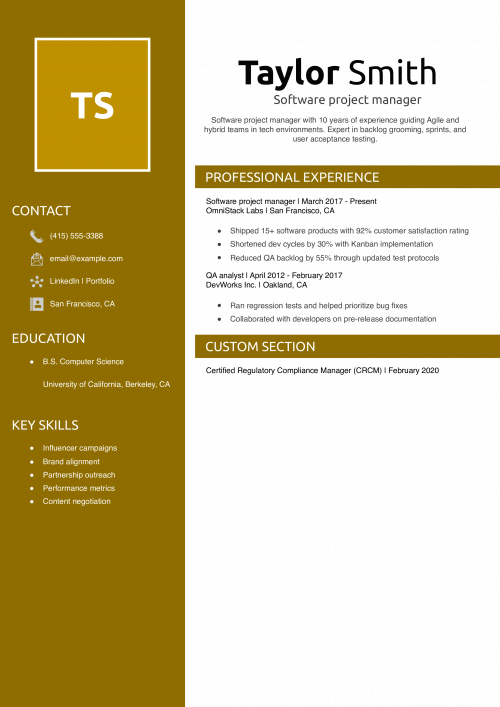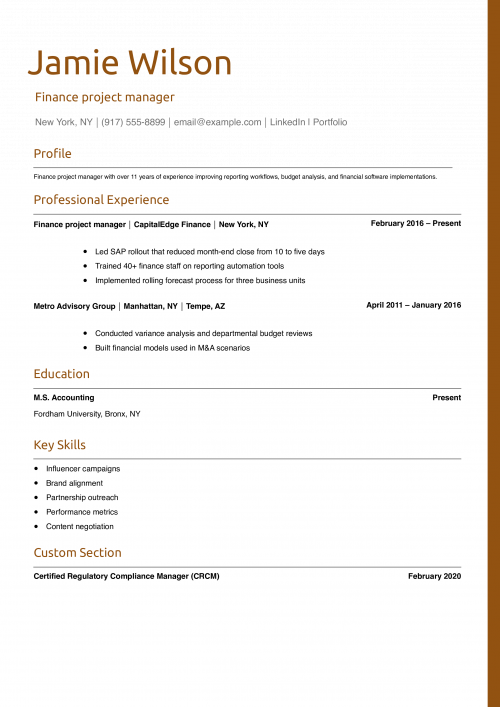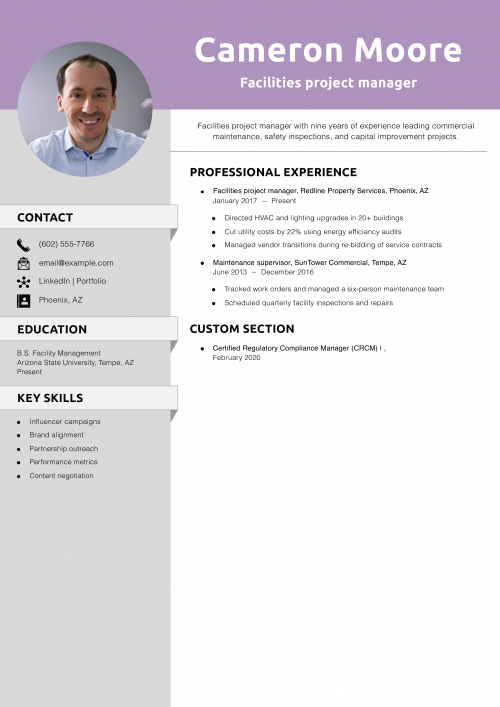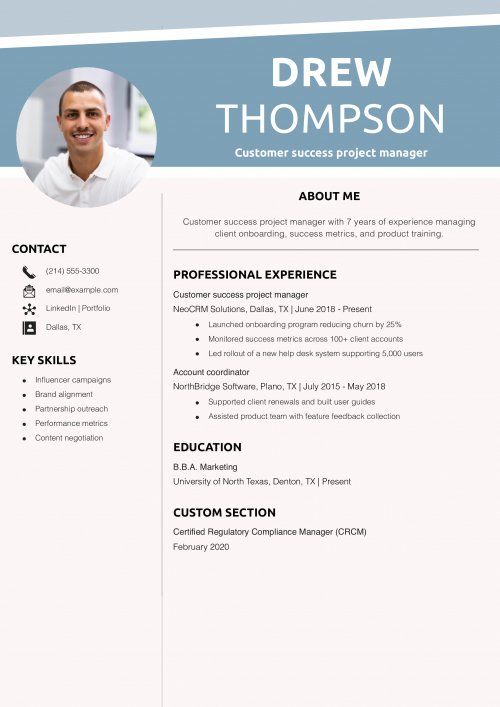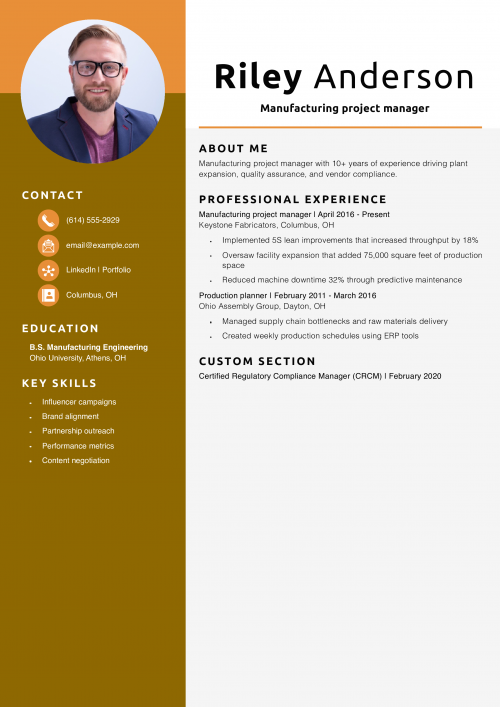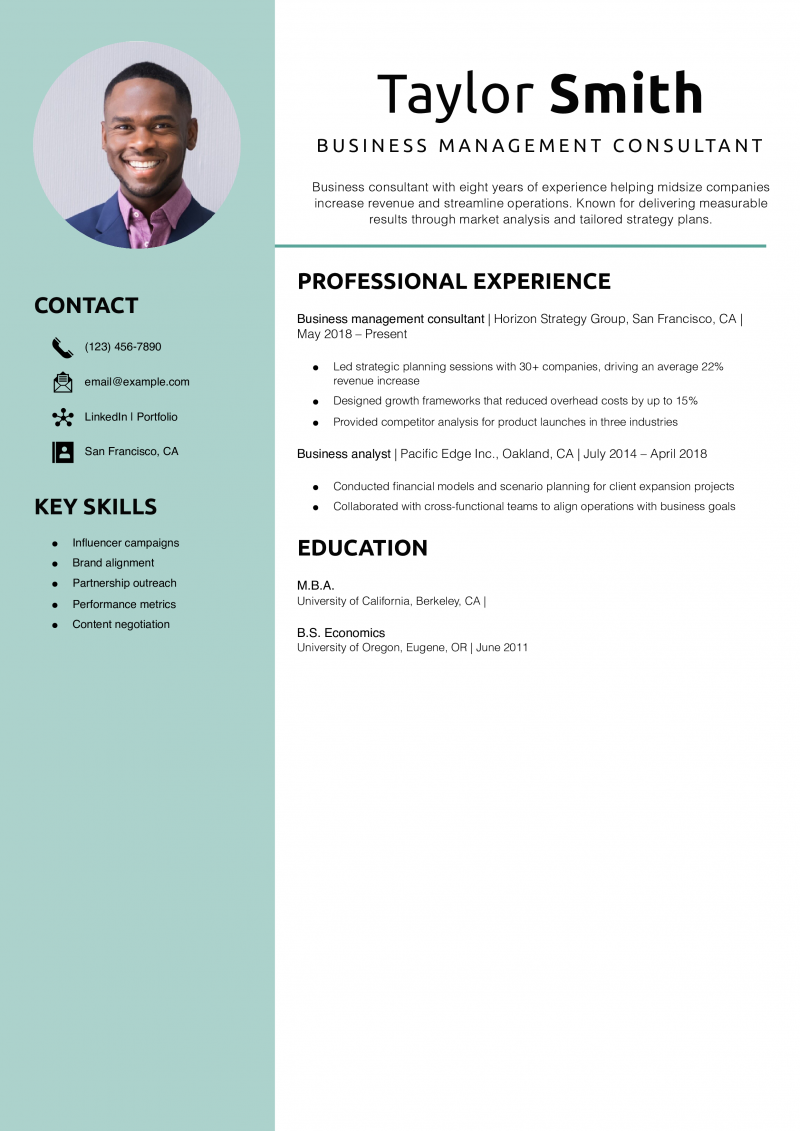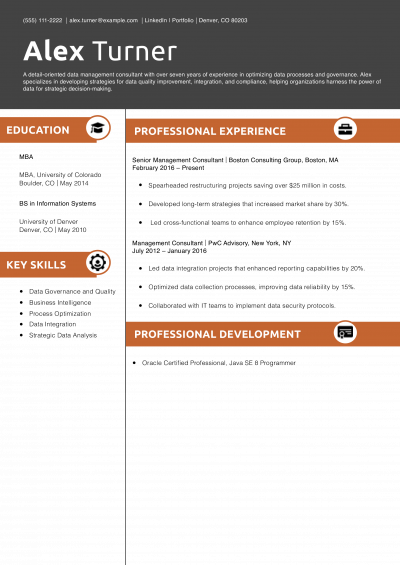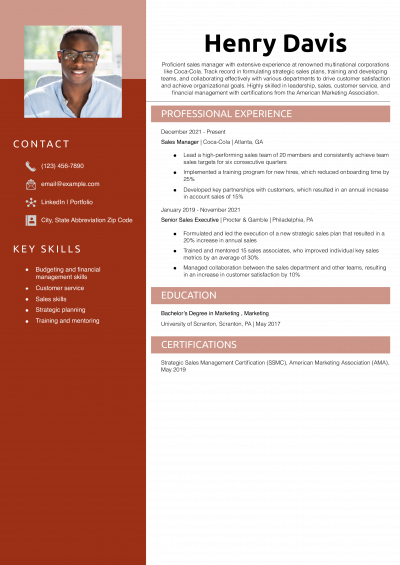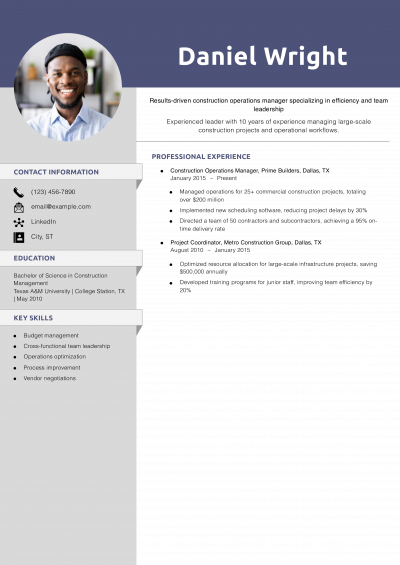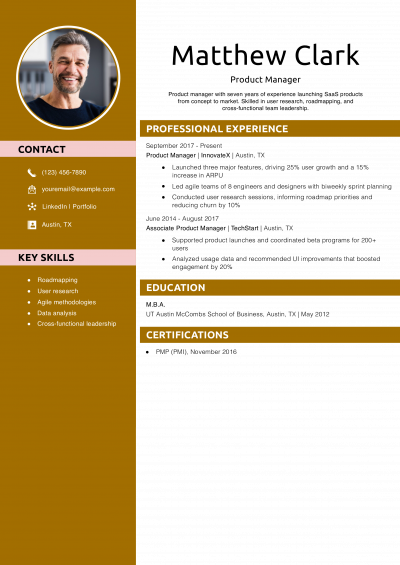The future of employment for leadership professionals is bright, and you’ll need a strong resume to land the best managerial positions. Your management resume should demonstrate a history of effective leadership, emphasizing an ability to motivate teams and achieve results. In this guide, we’ll provide expert strategies to help you create a resume that proves you can drive success and growth as a leader within your industry.
Key takeaways:
- Emphasize leadership impact: In a summary at the beginning of your resume, briefly mention your leadership style’s strengths. Inform hiring managers immediately of your ability to drive teams and achieve business goals.
- Describe quantifiable results: Use concrete metrics and data points in your professional experience section to add measurable value to your achievements. Quantifying things like cost reductions or revenue growth will make an even greater impact.
- Include industry-specific keywords: Tailor your resume with relevant management skills and keywords to align your document with the job description. This will help your resume pass through Applicant Tracking Systems (ATS) now used by most organizations.
Most Popular Management Resumes
Business Management Consultant Resume Example
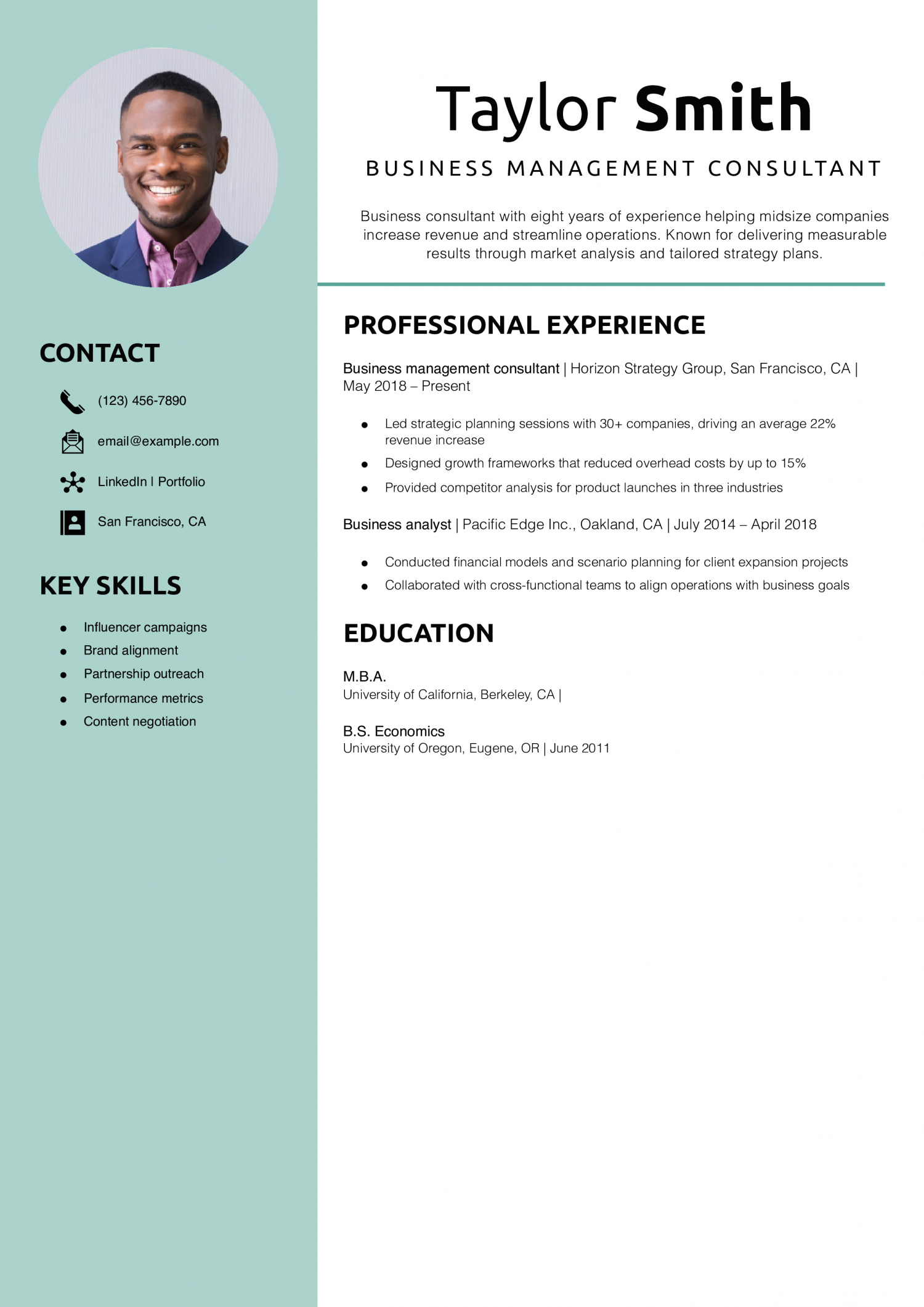
Why This Resume Is a Great Example
This resume clearly links business strategy to financial outcomes and efficiency gains. If you’re building a resume for the first time, follow this helpful guide on how to make a resume.
Change Management Consultant Resume Example
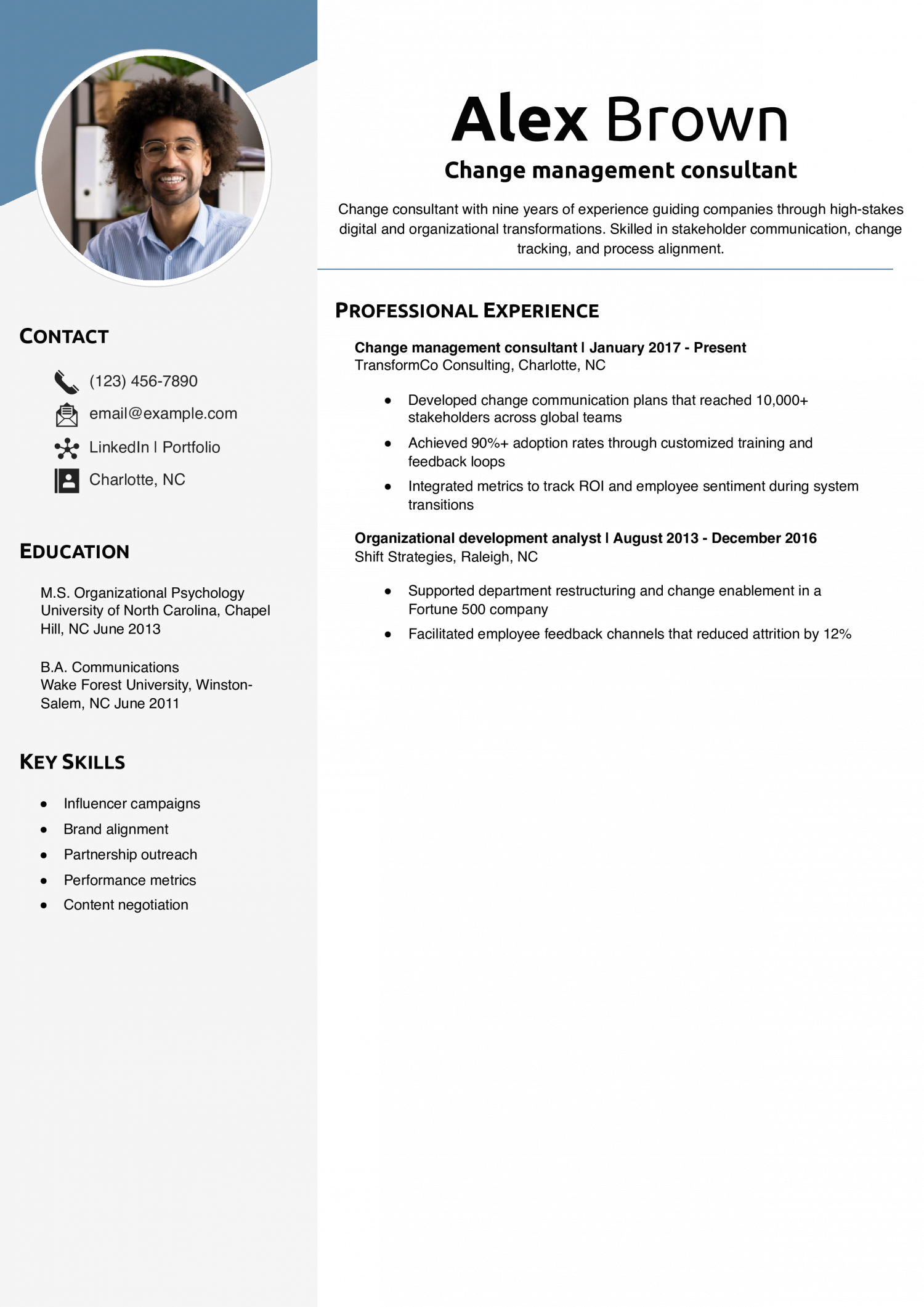
Why This Resume Is a Great Example
This resume effectively connects employee adoption metrics to change initiatives. Highlight similar transitions on your resume with this guide on resume job descriptions.
Entry-Level Management Consultant Resume Example

Why This Resume Is a Great Example
This resume highlights relevant internships and student experience in consulting settings. If you’re new to the field, use this resource on how to write a resume with no experience to stand out.
Organizational Change Management Consultant Resume Example

Why This Resume Is a Great Example
This resume emphasizes the human side of transformation with clear organizational impact. For more insights on this specialty, explore leadership skills for resumes.
Project Management Consultant Resume Example
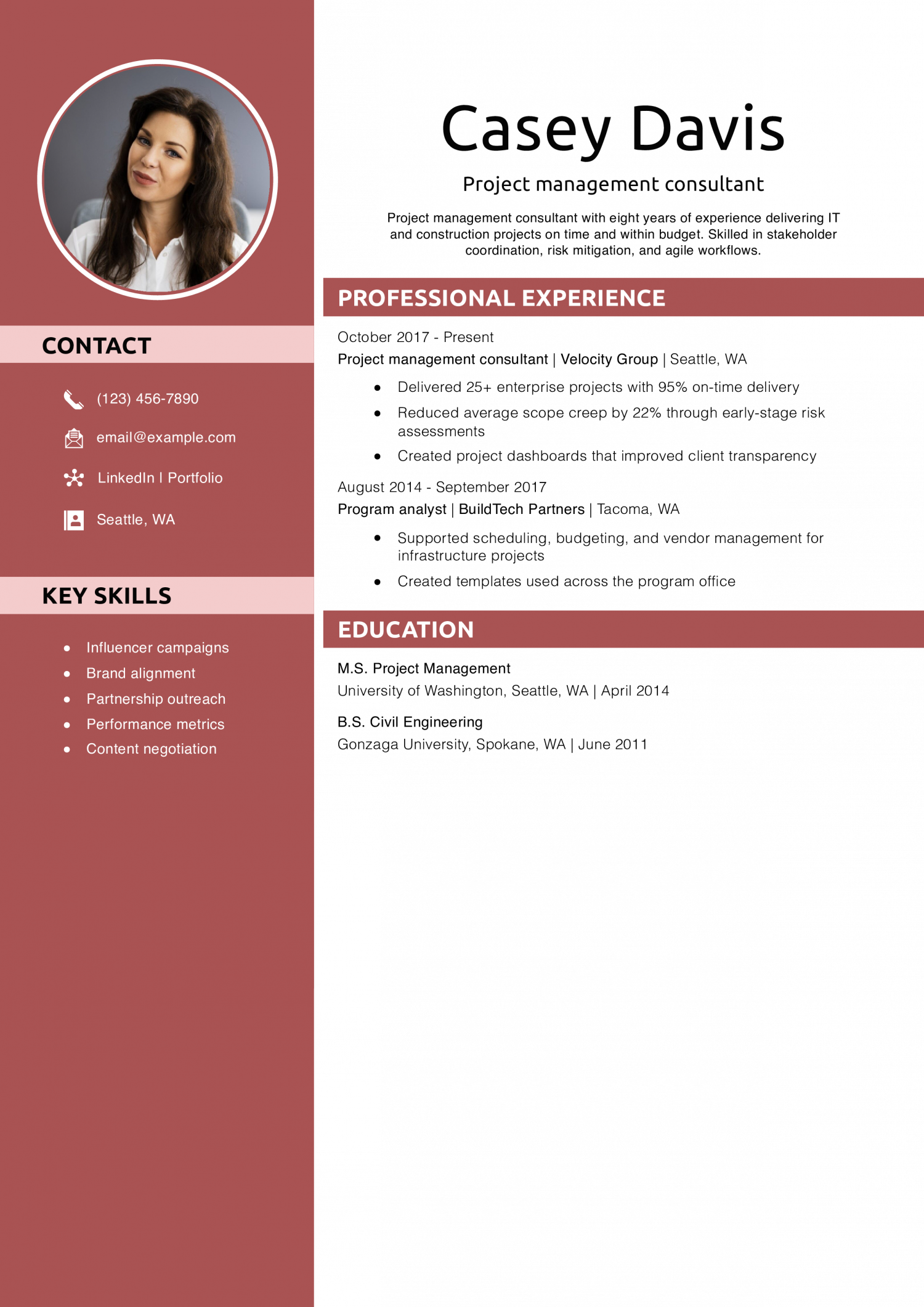
Why This Resume Is a Great Example
This resume combines agile project leadership with measurable delivery metrics. For more advice, check out this breakdown of project experience on resumes.
Business Project Manager Resume Example
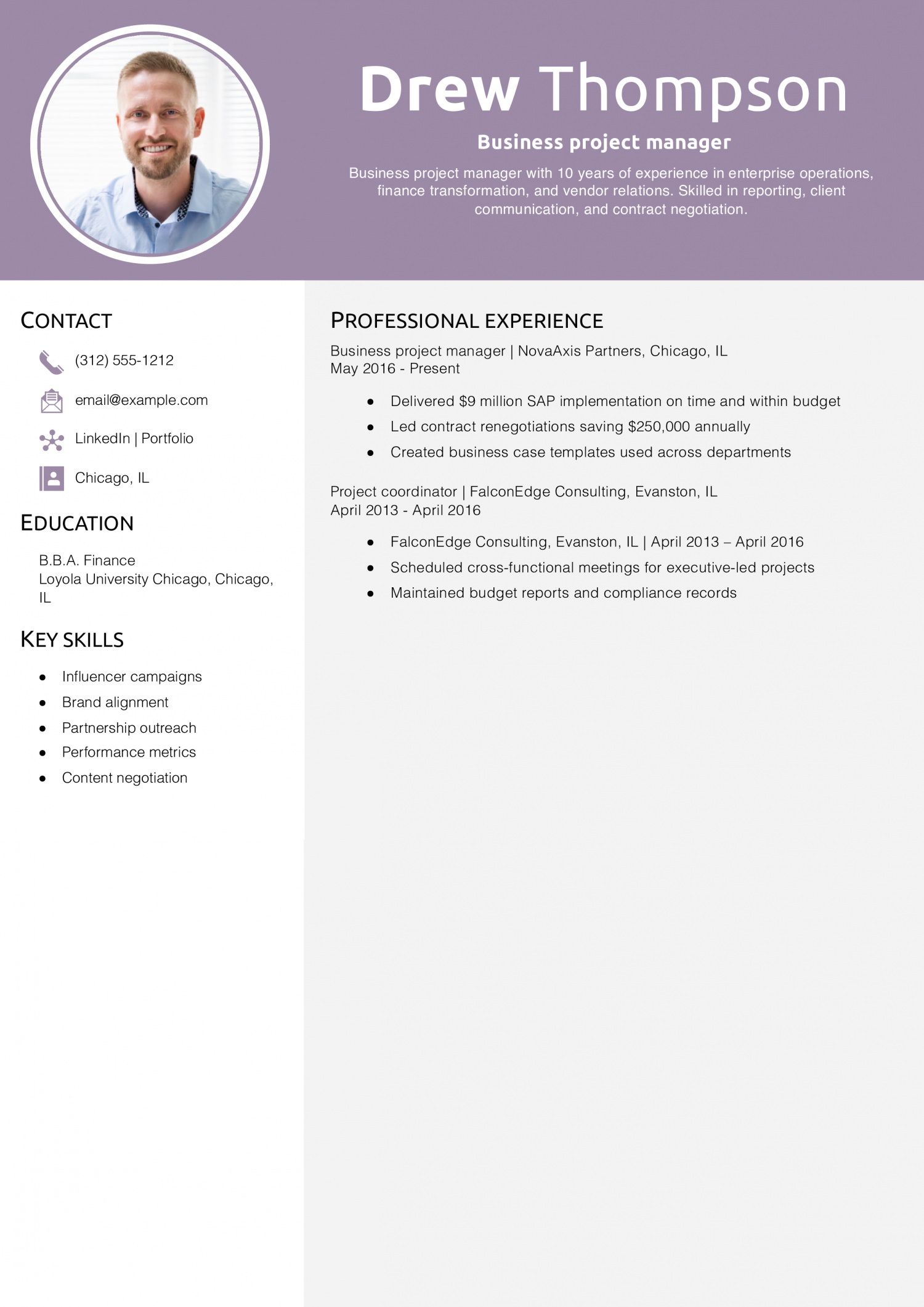
Why This Resume Is a Great Example
This resume is a great example of combining finance and project strategy in one document. Learn more about what to put on a resume.
Infrastructure Project Manager Resume Example
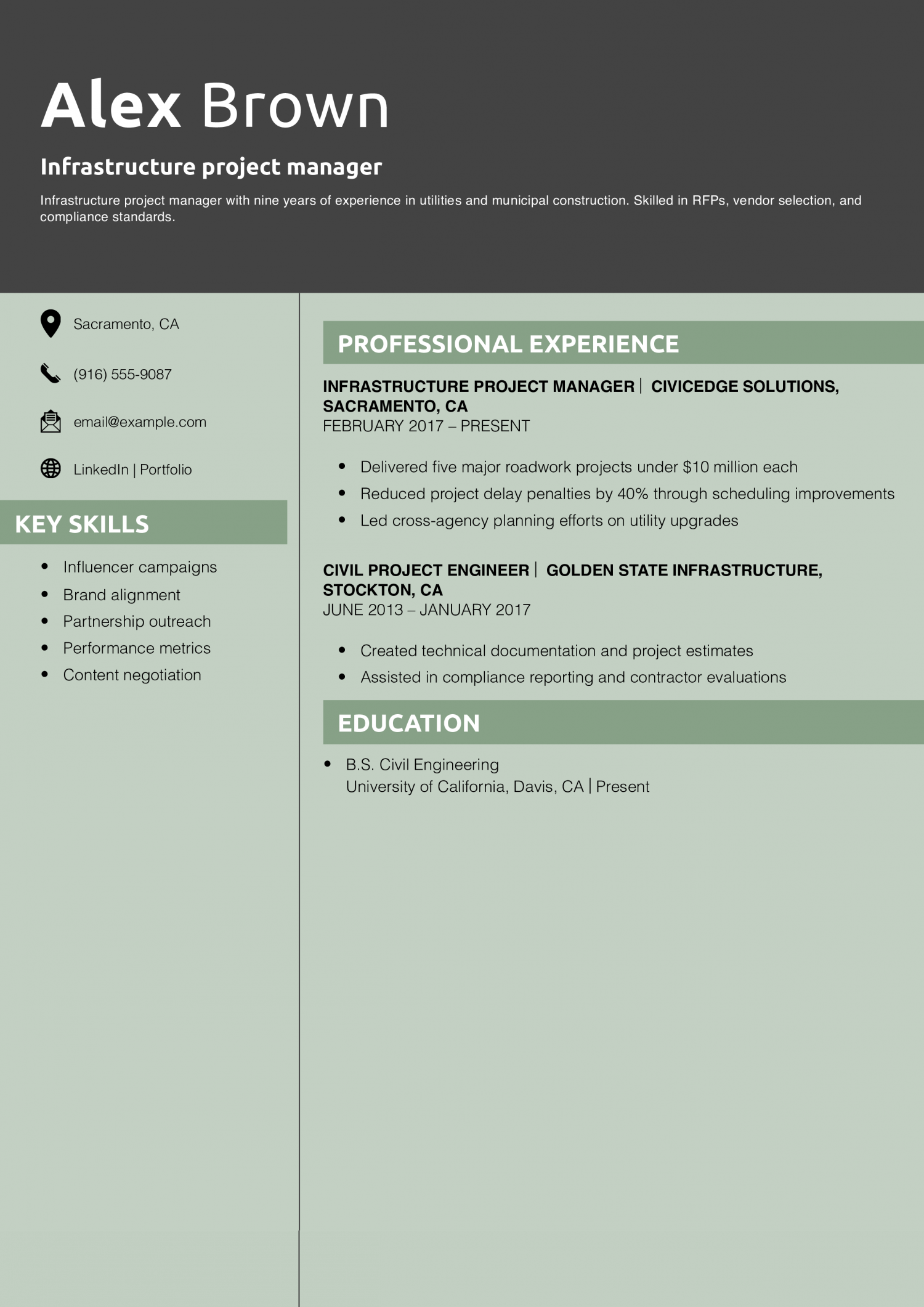
Why This Resume Is a Great Example
This resume shows strong infrastructure oversight and public sector collaboration. Read more about how to make a resume.
Digital Project Manager Resume Example

Why This Resume Is a Great Example
Her showcases results-driven project execution in the digital space. Explore how to write a resume summary.
Compliance Project Manager Resume Example
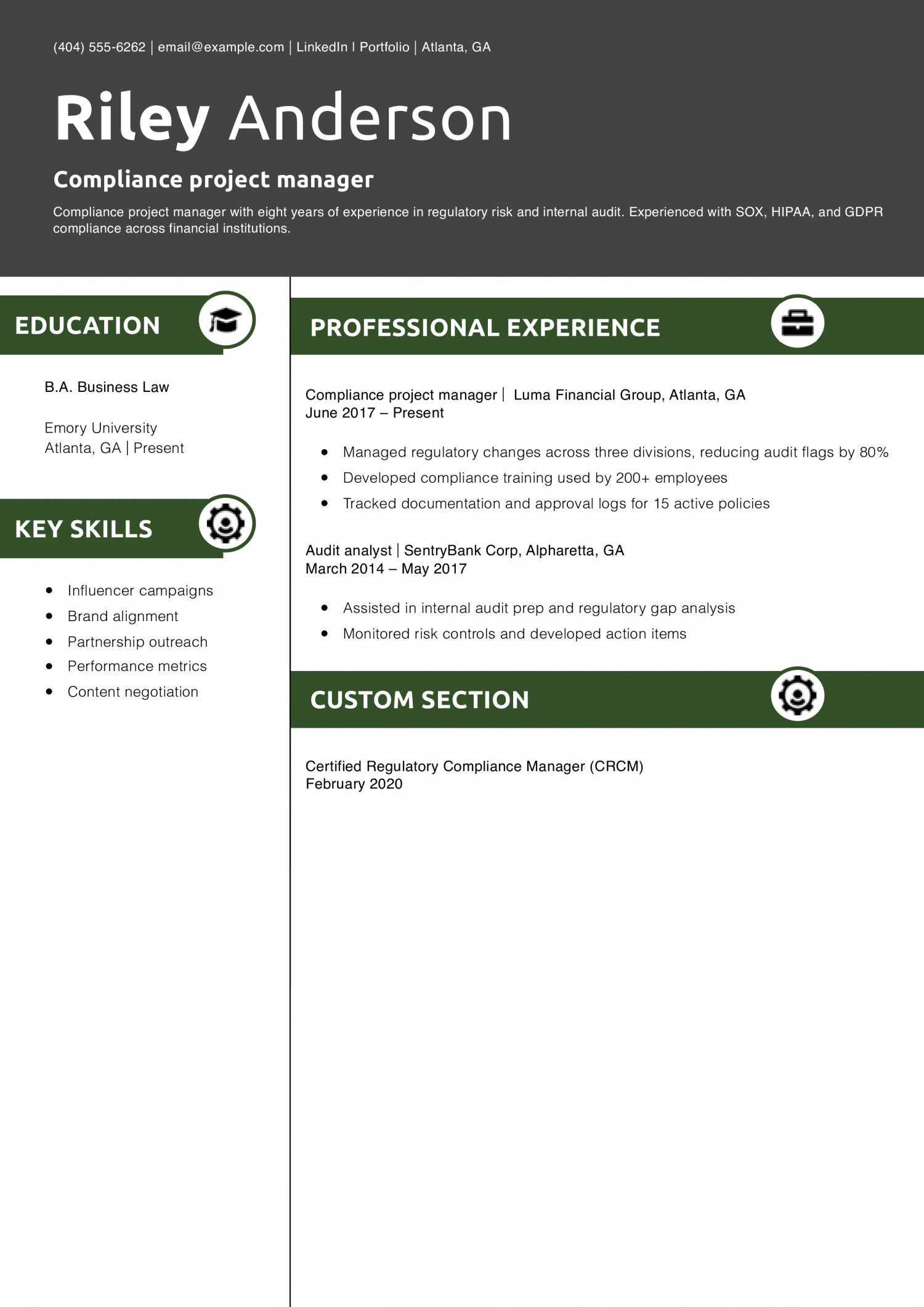
Why This Resume Is a Great Example
Her resume connects compliance impact to measurable organizational results. Learn how far back a resume should go.
Nurse Manager Resume Example Resume Example
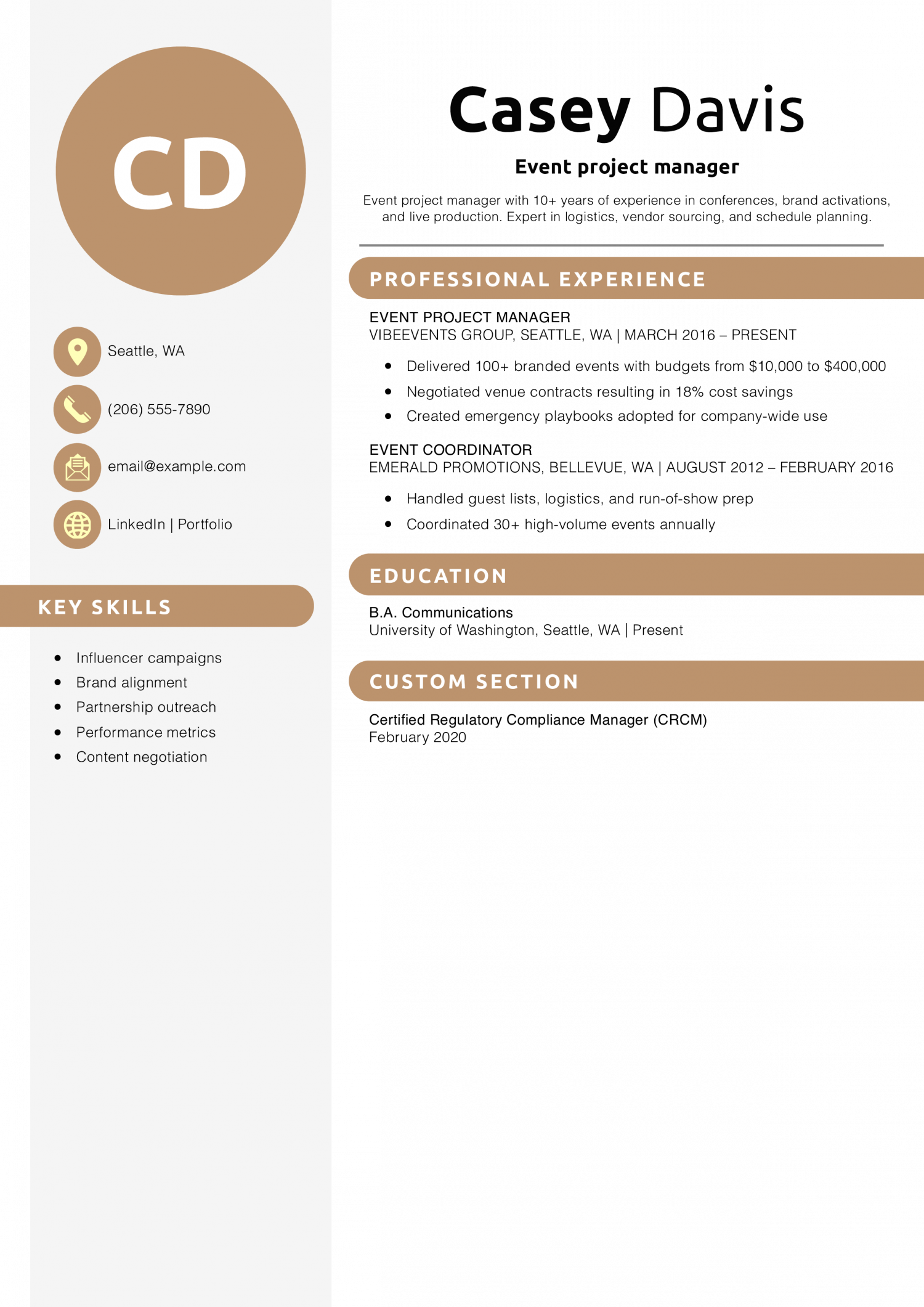
Why This Resume Is a Great Example
This resume blends event creativity with measurable ROI. See how to list volunteer work experience on a resume.
Remote Project Manager Resume Example
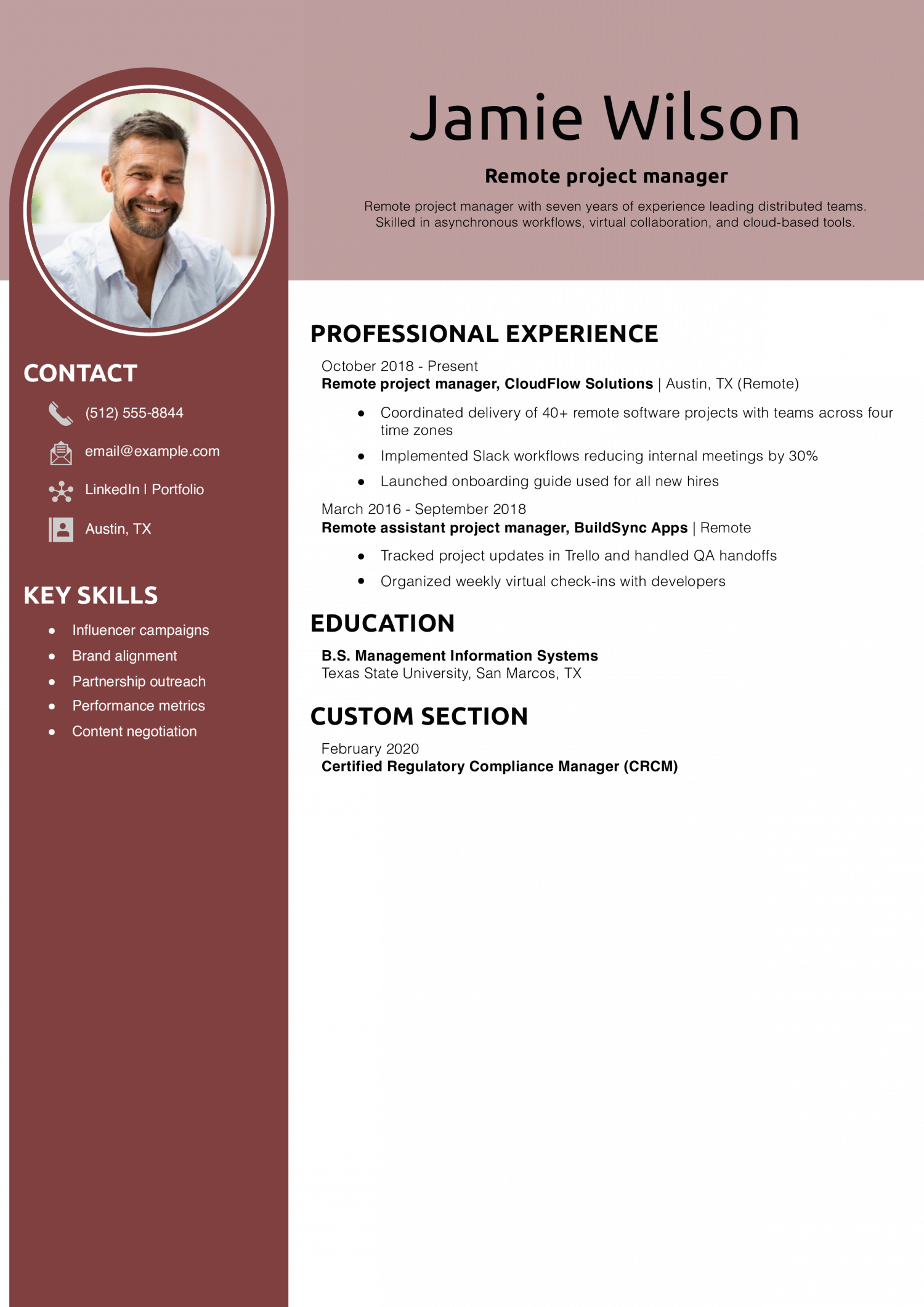
Why This Resume Is a Great Example
Her resume is tailored to highlight skills in remote environments. Discover how to list skills on a resume.
Risk Management Project Manager Resume Example
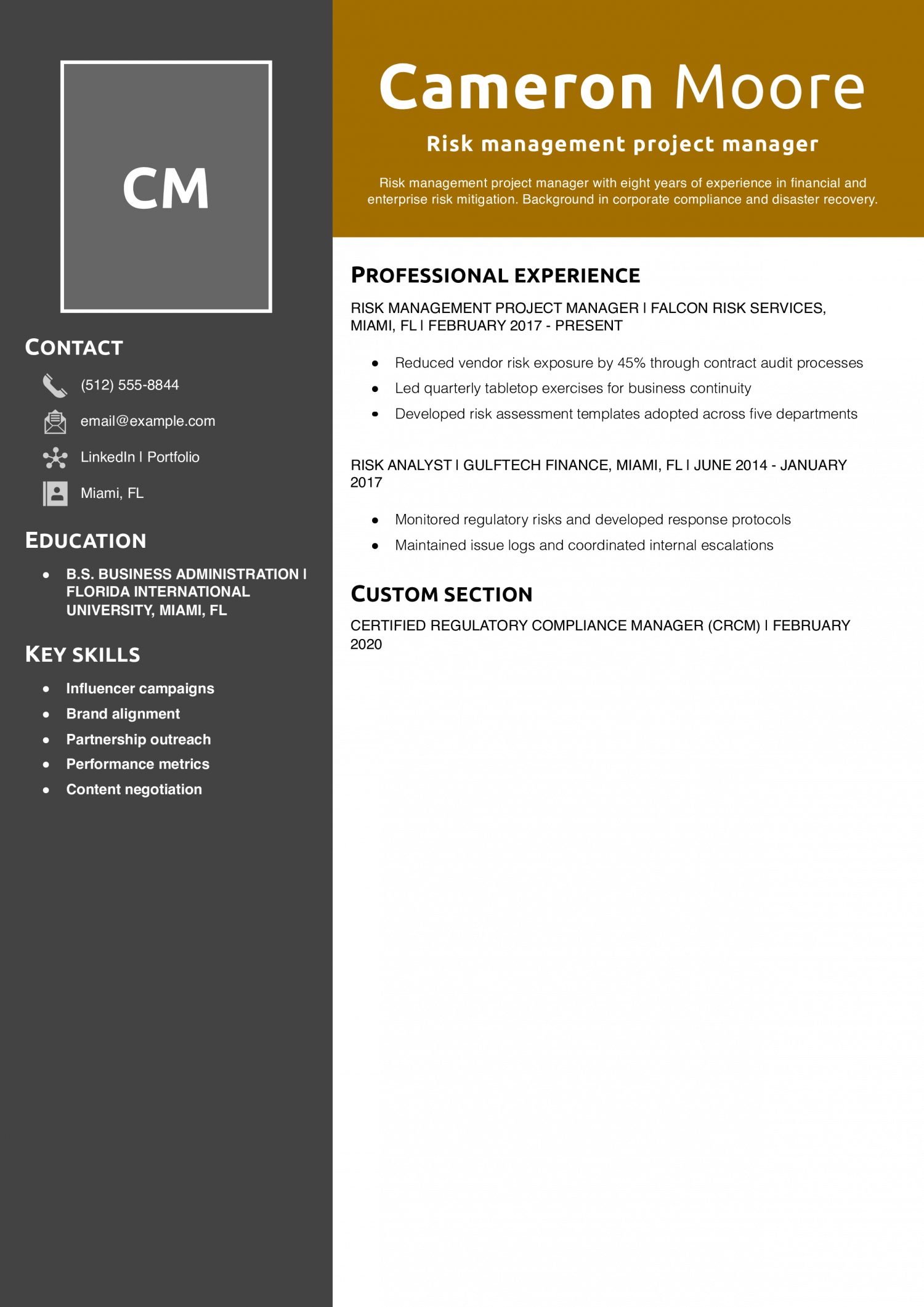
Why This Resume Is a Great Example
This resume demonstrates tangible reductions in risk and clear leadership. Read how to write a convincing resume profile.
Retail Project Manager Resume Example
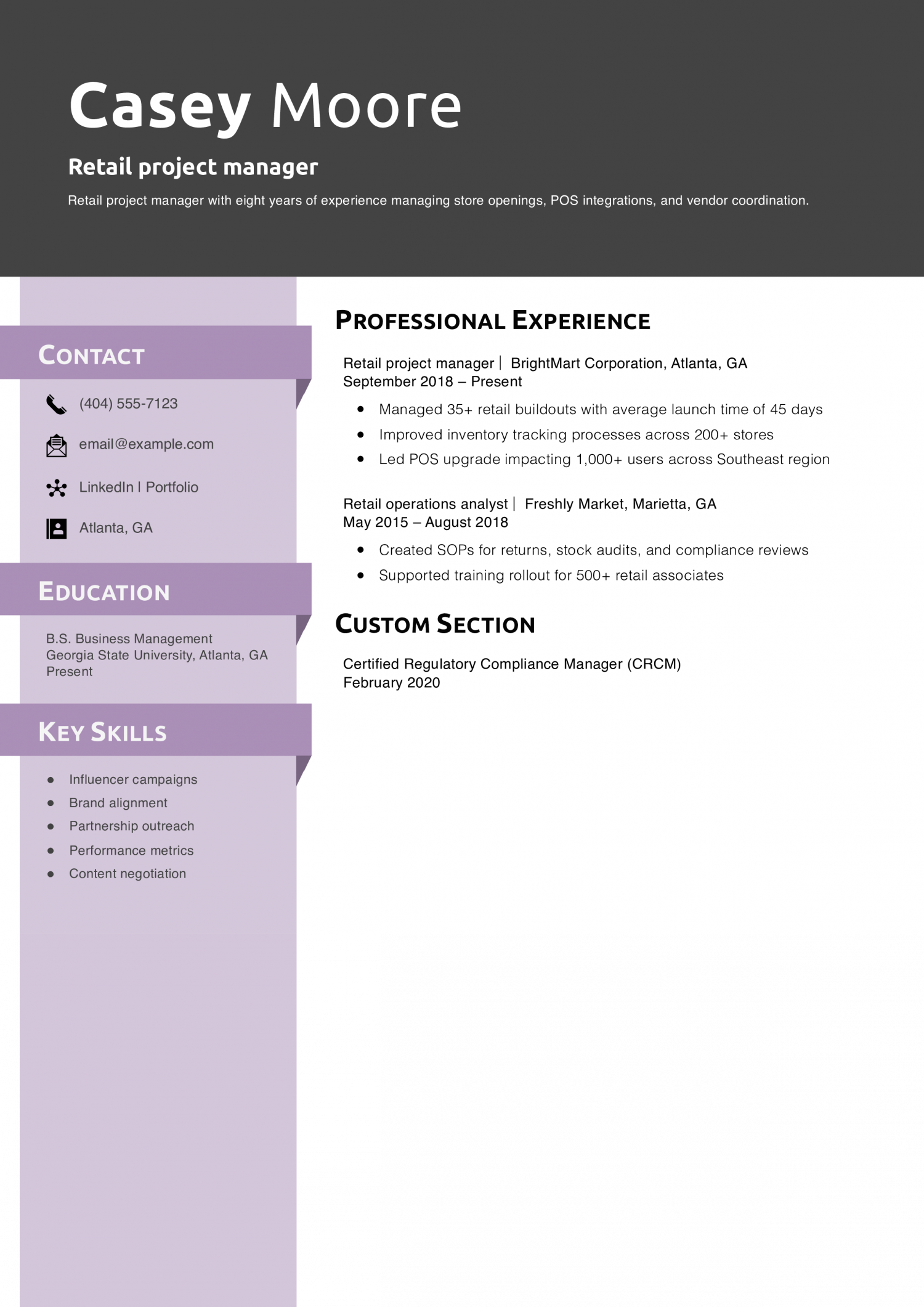
Why This Resume Is a Great Example
Her resume blends operations and systems leadership in a fast-paced environment. Learn more about resume job descriptions.
Education Program Manager Resume Example
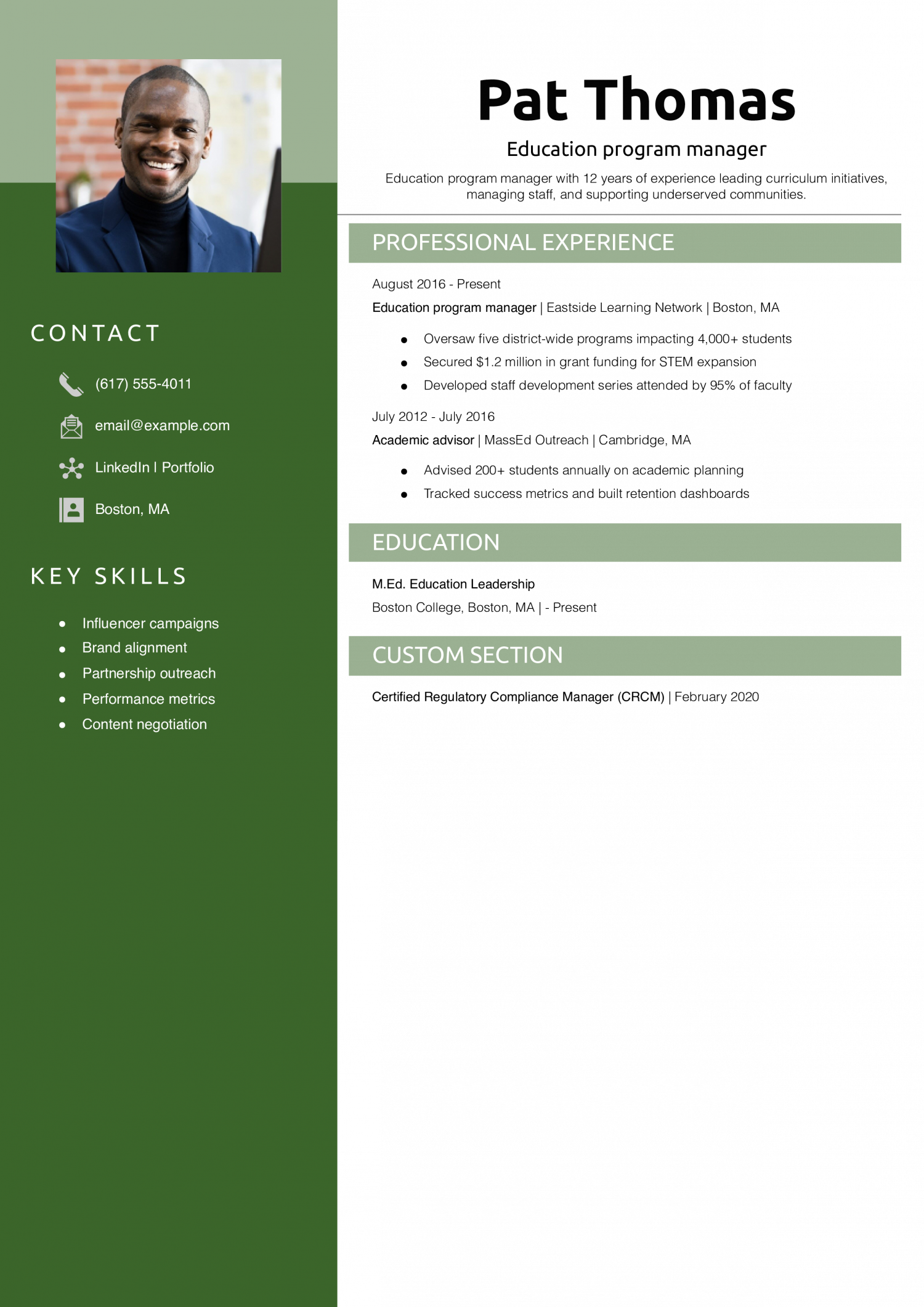
Why This Resume Is a Great Example
This resume highlights outcomes and funding wins in educational programming. See examples of leadership skills for resumes.
Software Project Manager Resume Example
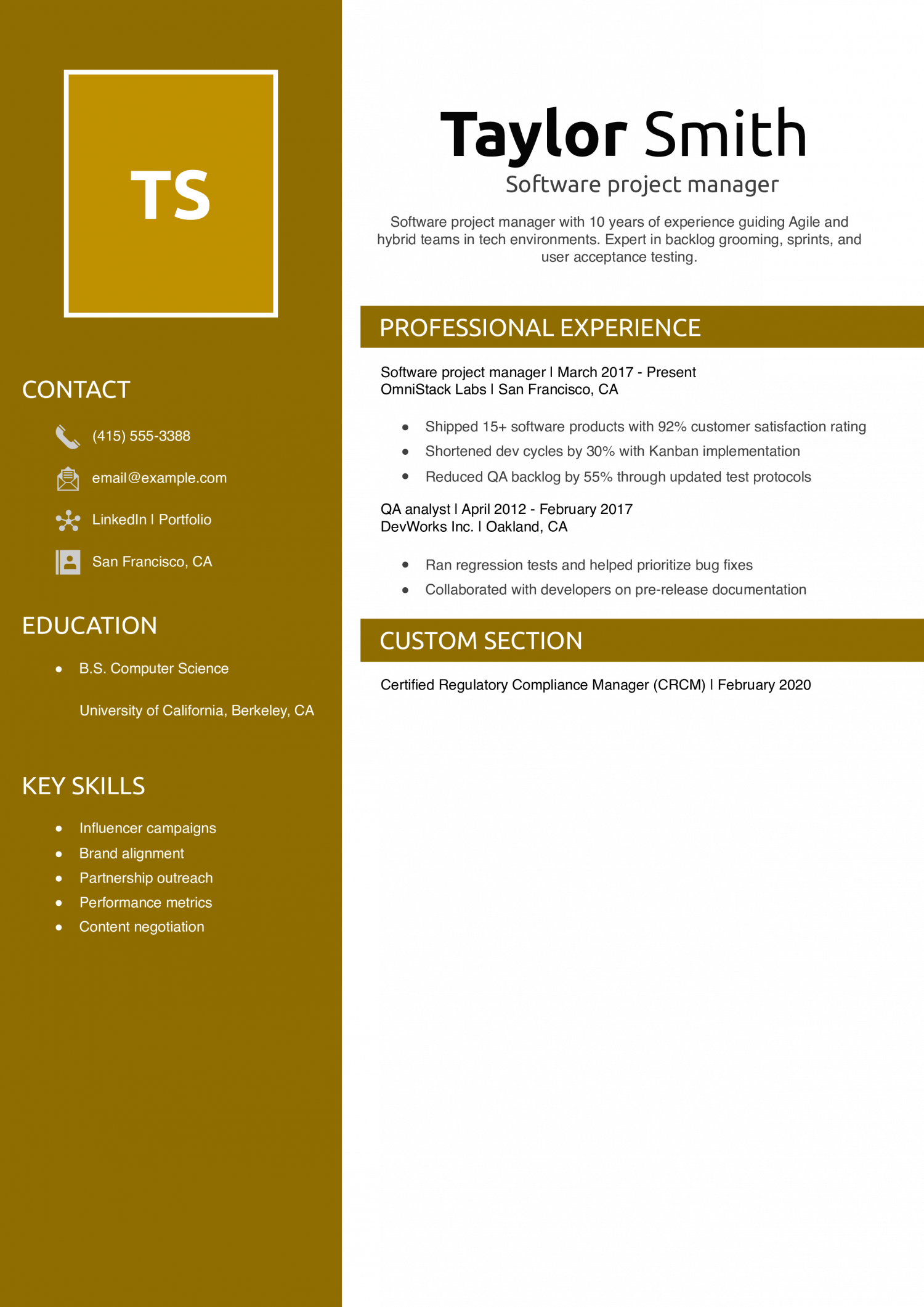
Why This Resume Is a Great Example
This resume highlights agile fluency and product delivery impact. Learn how to list degree on resume.
Finance Project Manager Resume Example
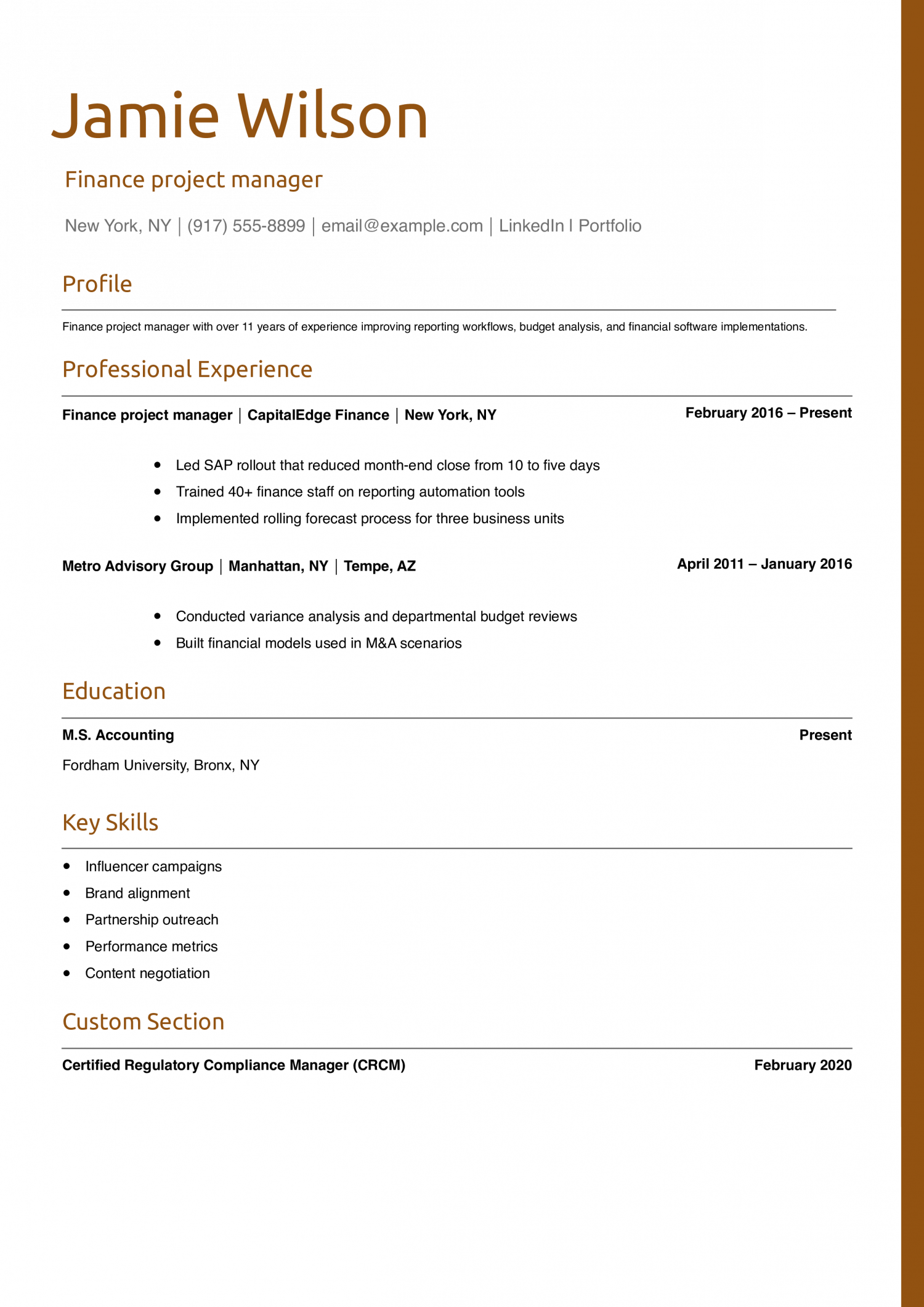
Why This Resume Is a Great Example
This connects routine maintenance and long-term capital planning. Read about how to list administrative skills on a resume.
Facilities Project Manager Resume Example
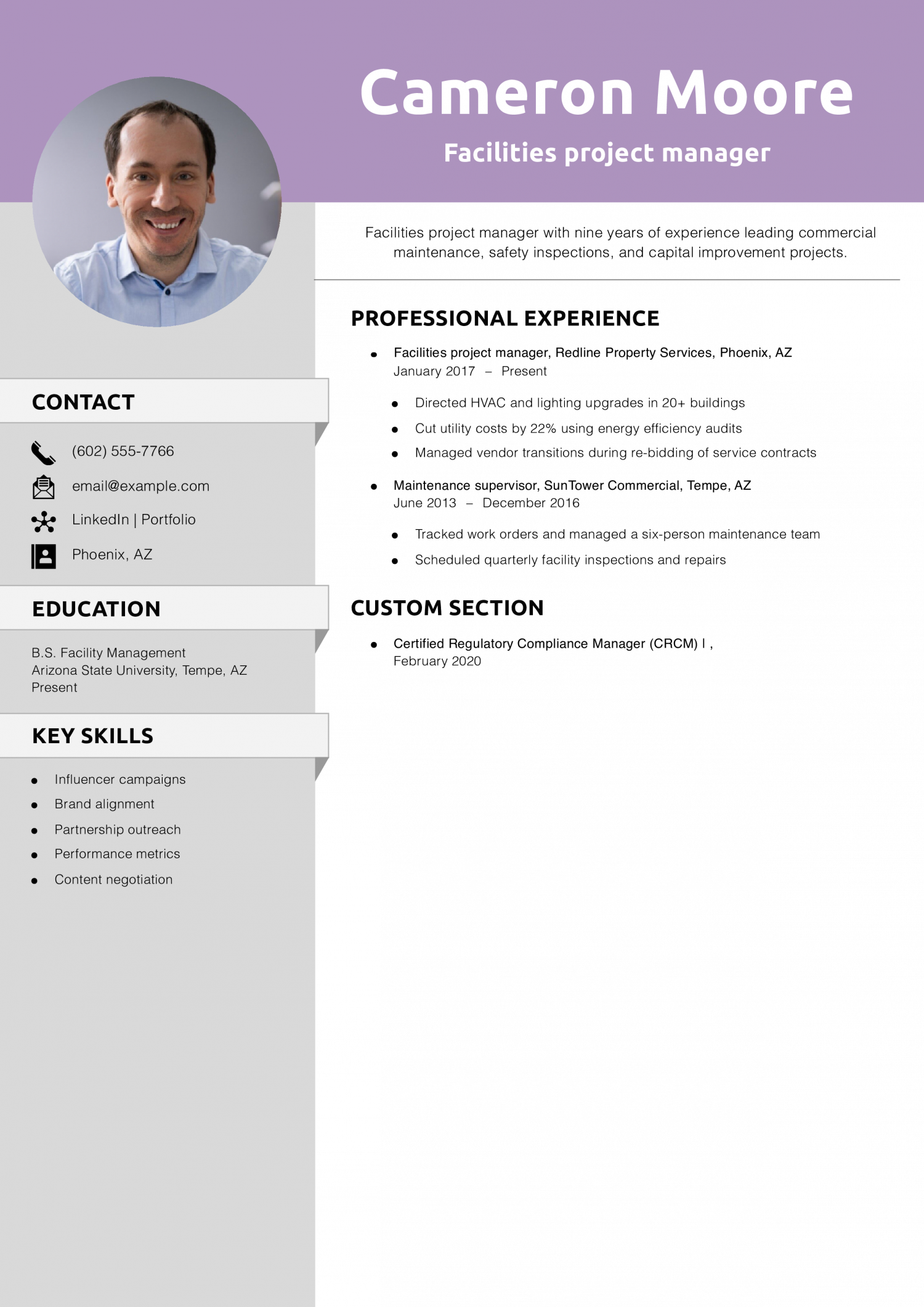
Why This Resume Is a Great Example
This resume includes delivery metrics and financial systems knowledge. Learn more about resume action words.
Nonprofit Development Project Manager Resume Example
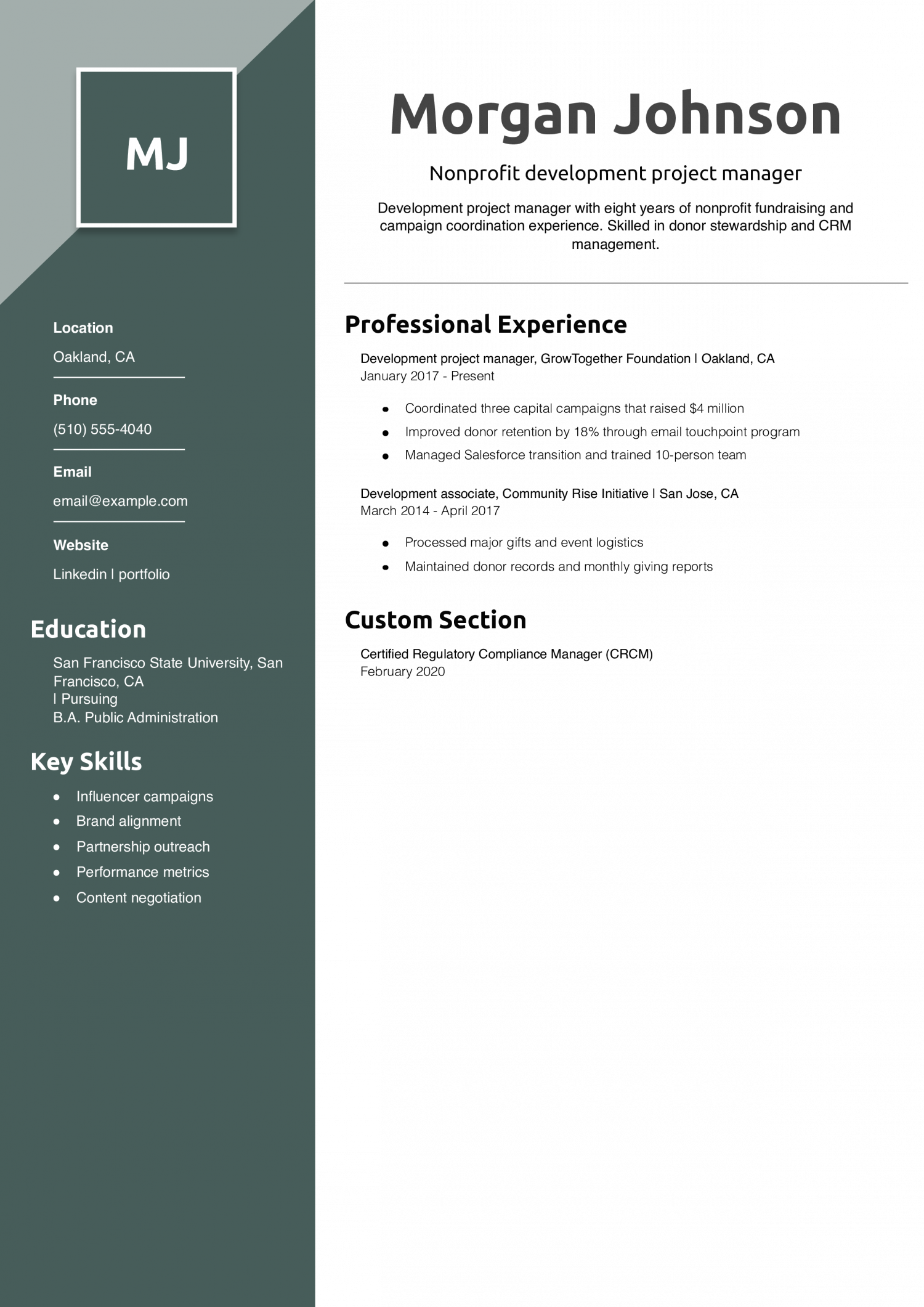
Why This Resume Is a Great Example
This resume balances fundraising goals with operational execution. Read more about resume personal statements.
Customer Success Project Manager Resume Example
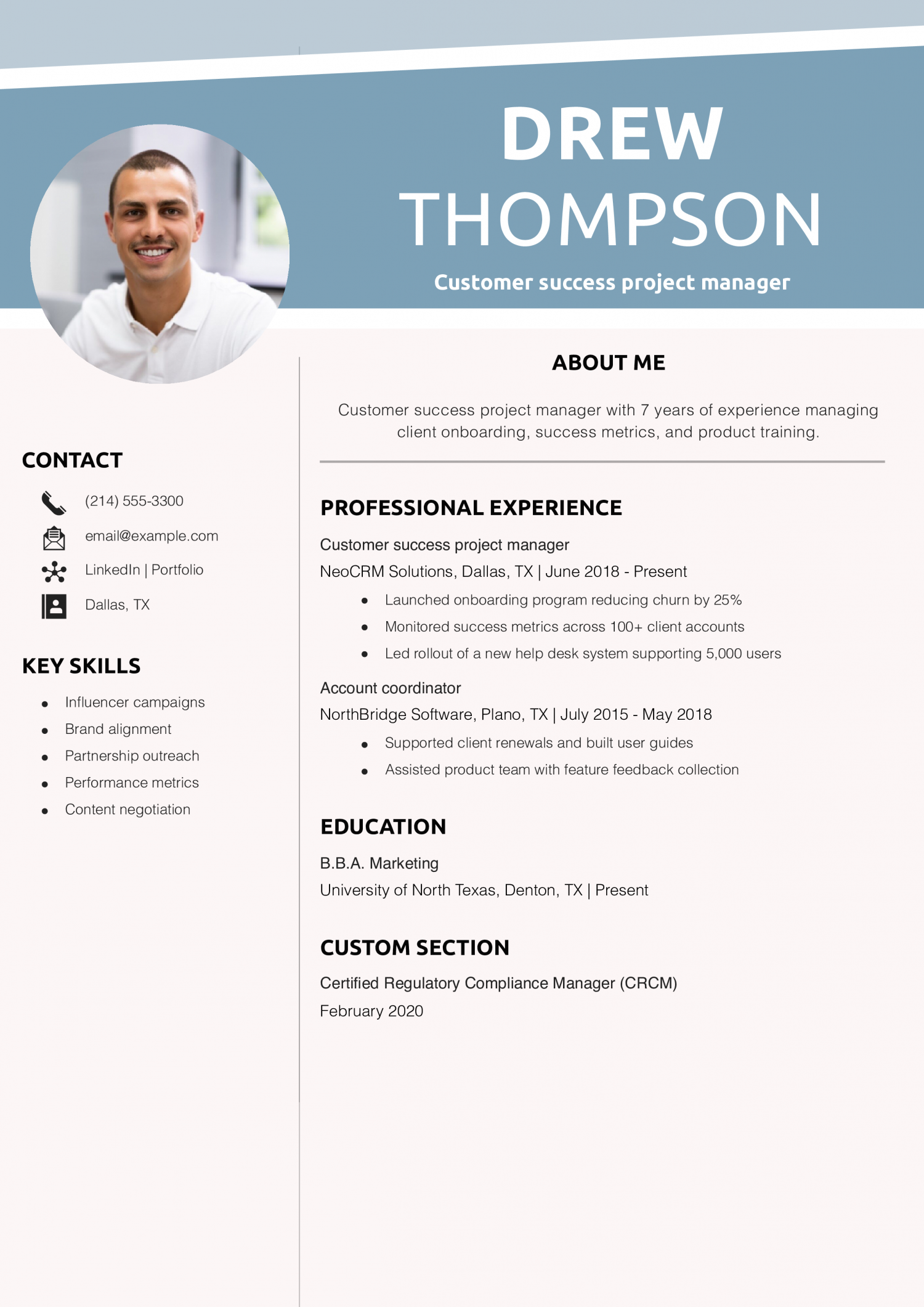
Why This Resume Is a Great Example
This resume is built around proactive client retention and project efficiency. Learn how to list work experience.
Manufacturing Project Manager Resume Example

Why This Resume Is a Great Example
This resume highlights production results and lean operations. Discover how to write your first job resume.
Management Text-Only Resume Examples and Templates
How To Write a Management Resume Example
To demonstrate that you can lead a team to reach strategic objectives, your resume must clearly communicate past success. Every section should point to your ability to drive measurable results. Your management resume should include the following:
- Contact information
- Profile
- Key skills
- Professional experience
- Education and certifications
1. Share your contact information
Include your most up-to-date contact information in the header of your resume to make it easy for hiring managers to follow up or schedule an interview. List your full name, phone number, email address, location, and a link to your online professional profile.
Example
Your Name
(123) 456-7890 | [email protected] | City, State Abbreviation Zip Code | LinkedIn
2. Craft an outstanding profile with a summary of your management qualifications
Your profile, the opening statement of your resume, offers a snapshot of who you are as a leader. To pique the interest of hiring managers, this small glimpse of your management career should include all of your most compelling qualifications. Start with a strong opening sentence listing your job title and years of experience. Then, mention key strengths, specialties, and priorities.
Include information that will connect with the needs of potential employers. For example, if you’re applying to a company undergoing a digital transformation, highlight your experience leading technology adoption initiatives. For roles within rapidly growing companies, emphasize your ability to scale operations while maintaining quality service and culture.
Senior-Level Profile Example
Senior risk management professional with over 10 years of experience in e-commerce safety and compliance. Develops AI-powered solutions to enhance product safety and streamline recall processes. Recognized for building and leading high-performing teams across global markets.
Entry-Level Profile Example
Operational professional with over eight years in shipping and logistics and three years in a leadership position. Known for optimizing store performance, enhancing customer satisfaction, and driving revenue growth. Passionate about team leadership and process improvement.
3. Outline your management experience in a compelling list
The professional experience section of your management resume is like your career’s highlight reel. This section is where you demonstrate how you’ve used key skills to overcome challenges, achieve results, and manage responsibilities. Discuss the teams or projects you’ve led and include examples that directly relate to the job you’re pursuing.
The emphasis should be on your leadership impact, weaving your responsibilities and job duties into the content to give the reader the scope and scale of your role.
Asking yourself simple questions can help you quantify your accomplishments: How much? How many? How often? For example, what did you and your team achieve? How did you lead them through change or navigate obstacles? Help hiring managers envision how you could add value to their organization.
Senior-Level Professional Experience Example
Senior Risk Manager, Amazon, Nashville, TN
June 2020 – present
- Oversee global recalls program affecting over 300 million customers, leading a team of 28 data analysts, compliance specialists, and project managers
- Onboard 50,000 third-party sellers into the Seller Safety Certification program within Q1 of 2021, decreasing safety violations by 15,000 instances year-over-year
- Reduced recall execution time from 14 days to 36 hours with the implementation of Amazon’s Recalls Logistics Service (RLS) program
- Developed an AI tool using Amazon SageMaker AWS Comprehend to increase early detection of potential product safety issues by 65%
Entry-Level Professional Experience Example
Senior Team Lead, FedEx Store, San Diego, CA
June 2021 – present
- Coordinate daily operations for a high-volume FedEx Office location, contributing to $1.5 million in annual revenue on a team of 12 associates
- Own targeted outreach to engage local businesses, increasing business-to-business (B2B) shipping revenue by 35%
- Reduced average wait times by seven minutes and improved satisfaction scores by 22% by implementing a new queue management system
- Collaborated with team to rank second out of 45 locations in the region for FedEx Ground package volume growth from 150 daily shipments to 225
Resume writer’s tip: Quantify your experience
Use numbers to highlight those times in the past when you reached targets, improved processes, exceeded sales, and managed people. As you describe past responsibilities and accomplishments, include metrics like percentages and dollar amounts to quantify your work. This tactic helps to measure your success and provides concrete evidence for your claims.
Do
- “Achieved a 30% year-over-year increase in Chase Sapphire card applications, ranking first in the Southeast region for new premium card acquisitions”
Don't
- “Processed the most credit card applications in the region”
Resume writer’s tip: Tailor your resume for each application
Even within the same industry, every management position will have its own requirements. Sending the same generalized resume to every job you’re interested in won’t get you very far. The best approach is to research the company and the role, and then tailor your document each time you submit an application. This demonstrates your genuine interest in that unique position.
For example, imagine you’re interested in working for a growing e-commerce startup, and you know they need a leader to optimize supply chain operations. You would emphasize any experience scaling logistics or implementing inventory management systems. Show that you understand their specific needs and have a track record of addressing similar challenges.
What if you don’t have experience?
Employment for management professionals is expected to grow faster than average over the next 10 years. This healthy demand means hiring teams may be more willing to invest in people with little experience but the right education, skills, and ambition.
Instead of focusing on work history, structure your resume to highlight transferable skills, education, industry expertise, and training. If you have leadership experience related to your target role in a volunteer, sports, or school setting, mention that as well. You can also seek out insight and mentorship from current industry leaders. Ask them how they made the leap from no management experience to their first leadership role.
4. Include relevant education and certifications
Educational requirements will vary depending on the type of management position you’re applying for. When listing your academic information, always begin with your highest level of education first. If you’ve taken relevant managerial, leadership, administrative, or business-related coursework, you can list that here as well.
In addition to any formal education, include certifications that empower your role as a manager. Software proficiencies, regulatory certifications, licenses, and role-specific credentials will help distinguish you from other top candidates.
Education
Template:
[Degree Name] | [Graduation Year]
[School Name] | [City, State Abbreviation]
Example:
Bachelor of Science (B.S.) in Management | June 2014
University of Florida | Gainesville, FL
Certifications
Template:
[Certification Name] | [Awarding Organization] | [Completion Year]
Example:
Certified Manager | Institute of Certified Professional Managers | 2022
5. List pertinent key skills
With over 9.5 million professionals employed at the management level, the technical and interpersonal abilities required for each individual will be different. To determine which key skills to include, it’s always best to defer to the job description of the position you’re seeking. If you’re looking for some inspiration, here’s a list of common skills most leadership professionals will need to demonstrate.
| Hard Skills | |
|---|---|
| Agile and Scrum methodologies | Budgeting and forecasting |
| Business intelligence tools | Contract negotiation |
| Customer relationship management (CRM) software (Salesforce, Hubspot, Oracle) | Enterprise resource planning (ERP) systems |
| Financial analysis | Performance metrics tracking |
| Six Sigma techniques | Supply chain management |
| Soft Skills | |
|---|---|
| Change management | Conflict de-escalation and mediation |
| Constructive feedback delivery | Crisis management and rapid decision-making |
| Cross-functional team leadership | Executive presence and board communication |
| Organizational culture shaping | Remote team engagement |
| Stakeholder relationship management | Talent identification and development |
Resume writer’s tip: Use common action verbs
Leadership is about taking initiative and approaching your work with a proactive mindset. To help you communicate this drive for excellence, use action verbs when creating bullet points for your professional experience section. This approach will also help to keep your descriptions concise and impactful. Use some of the words below as you write your management resume:
| Action Verbs | |
|---|---|
| Achieved | Analyzed |
| Championed | Collaborated |
| Conducted | Elevated |
| Implemented | Innovated |
| Navigated | Optimized |
| Spearheaded | Streamlined |
| Synchronized | Transformed |
How To Pick the Best Management Resume Template
The best management resume template is clean, concise, and well-structured. Each section is clearly defined and uses elements like bullet points to organize information. The layout should make it easy for hiring managers to quickly scan and locate key information about your leadership experience and achievements.
Consider industry and company culture when making your selection. A template that works for a creative tech startup may not be suited for a role at an established financial institution. Strike a balance between modern and professional for the best first impression.
Frequently Asked Questions: Management Resume Examples and Advice
Your Management CV should include a strong profile summary that emphasizes your specializations and key skills. Highlight any specific accomplishments that show your ability to impact the company, such as saving money, improving processes, or leading teams. Tailor the skills section to match the requirements of the job you're applying for to increase your chances of being noticed.
Every piece of information on your management resume should be relevant to the role you're pursuing. Customize your document every time you submit an application and let the job requirements be your guide as you choose which leadership skills, experiences, qualifications, and achievements to include in your resume.
If an employer uses ATS software, your resume is more likely to be approved for the next round of the hiring process if you use keywords and phrases. Incorporate similar language naturally throughout your resume. Address every major requirement listed in the job description as much as you can, showing how you align with the company's management needs.
Management resumes are best set up to showcase your career progression over time, making the chronological format the best option for this job type. The professional experience section takes up the majority of the page and lists your most recent positions in reverse chronological order.
Hiring managers are most interested in your recent leadership accomplishments and how they relate to the position they're trying to fill. If you have a strong work history, your stability and longevity stand out as a key strength and add to your credibility as a manager.
Include a cover letter with your resume
Complete your application with a well-crafted cover letter to present the full picture of your management experience. Think of it as your personal pitch to the hiring manager or executive team. Add a narrative component to the bullet points and raw data of your resume. Use those persuasive communication skills to describe why you’re the perfect fit.
Check Out Related Examples
Resume Templates offers free, HR approved resume templates to help you create a professional resume in minutes. Choose from several template options and even pre-populate a resume from your profile.

